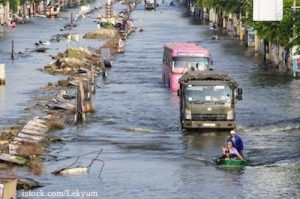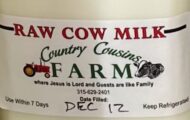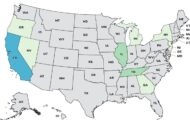A new report released by Center for Food Safety’s Cool Foods Campaign states that food security is jeopardized by climate change. The report is called Food and Climate: Connecting the Dots, Choosing the Way Forward. Climate change creates extremes in weather, from temperatures that are much hotter and cooler than normal, and rain and snow amounts that are much lower or greater than normal.
 In 2012, for instance, droughts and heat waves affected 80% of agricultural land, causing $30 billion in damages. California is now experiencing its worst drought in its 153 year history. That state produces almost half of the country’s fruits and vegetables. Food prices are expected to rise significantly this year as a result of this climate catastrophe.
In 2012, for instance, droughts and heat waves affected 80% of agricultural land, causing $30 billion in damages. California is now experiencing its worst drought in its 153 year history. That state produces almost half of the country’s fruits and vegetables. Food prices are expected to rise significantly this year as a result of this climate catastrophe.
Climate change is also causing earlier springs and warmer winters, which lets pathogens and parasites thrive at the expense of crops and food animals. Invasive species also thrive in these conditions, which increases the effect on crops and farms.
Some of the current problems include 20,000 cattle freezing to death in South Dakota last year in an unseasonable October blizzard; authorities canceling the 2014 New England shrimp season because of low population caused by warming waters and overfishing, and Vermont farmers being forced to destroy $2 million worth of vegetables that were contaminated by the floodwaters of Hurricane Irene. In the future, Alaska’s red king crab fishery is expected to collapse within decades because of increasing ocean acidity; and half of California’s grape-growing areas will become too hot to support that crop by 2039.
A warming earth also causes problems you may not expect. Bees and butterflies are sensitive to temperature extremes; bees pollinate one-third of the food produced in this country. The number of cold nights have decreased; crops exposed to higher night-time temperatures have greatly reduced yields and reduced quality. Stone fruit trees, for instance, need cool nights to set fruit.
Concentrated animal feeding operations (CAFOs, or factory farms) and synthetic nitrogen fertilizers are both huge contributors to greenhouse gasses. Manure from CAFOs is stored in lagoons, where it releases methane that is 21 times more potent than CO2 as a greenhouse gas.
Center for Food Safety states that organic agriculture and agroecological methods are necessary for the planet’s future, since they can match and sometimes exceed yields over industrial agriculture. In addition, healthy soils can store CO2, mitigating the effects of greenhouse gasses. Consumers can help by eating unprocessed foods, buy locally and in-season, choose organic foods, avoid industrially-produced meat and dairy, and reduce food waste.




